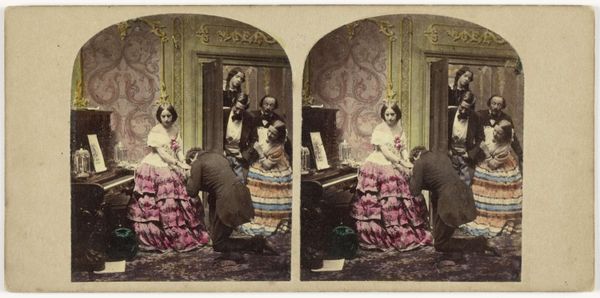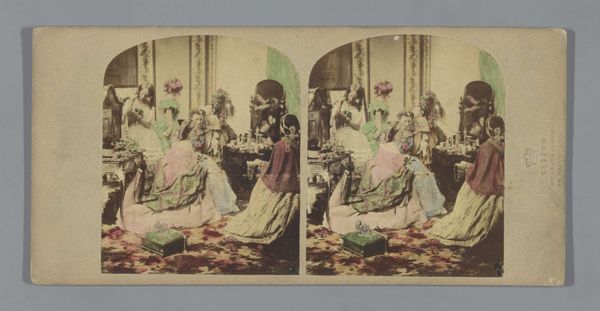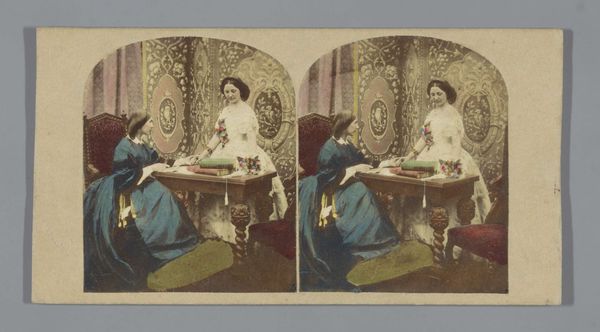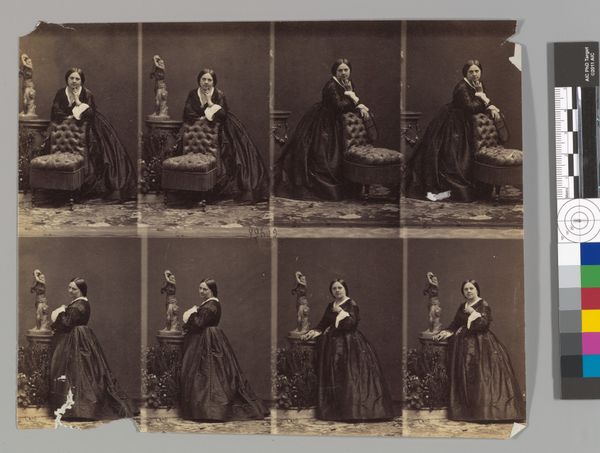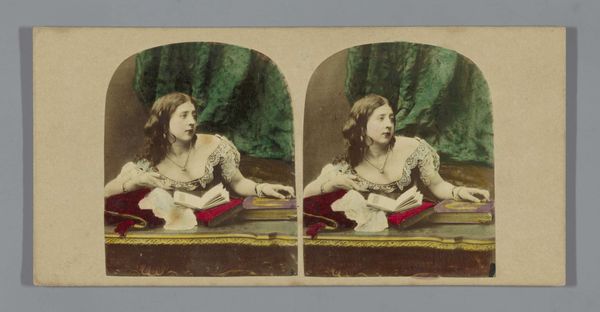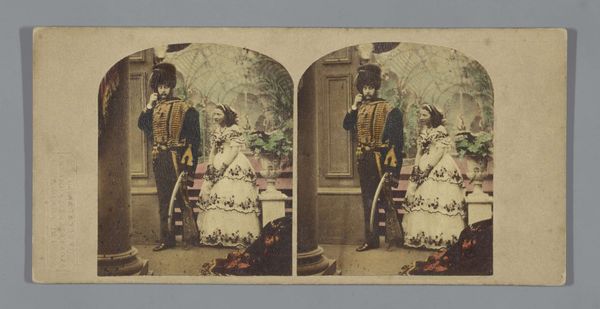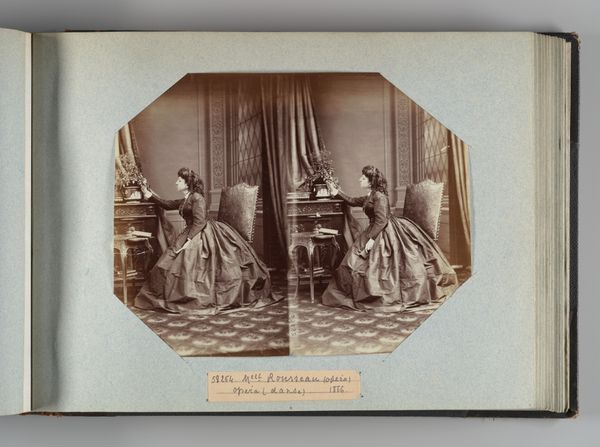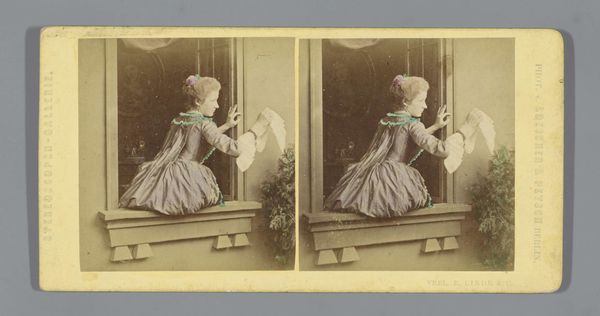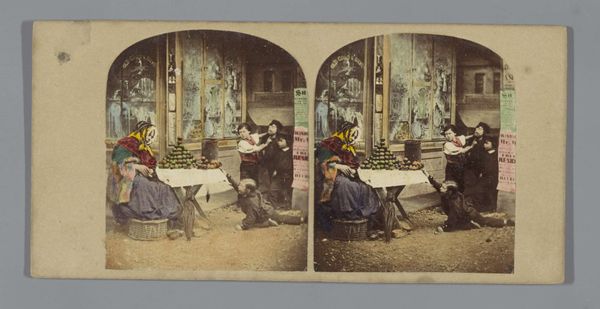
photography
#
portrait
#
water colours
#
photography
#
coloured pencil
#
genre-painting
Dimensions: height 85 mm, width 174 mm
Copyright: Rijks Museum: Open Domain
Editor: This photograph, titled “Man knielt voor vrouw,” made between 1850 and 1864 by Alfred Silvester, depicts a man kneeling before a woman. It feels like a scene from a play, staged with a lot of formality. What catches your eye? Curator: What strikes me is how this genre painting is captured via photography, which was fairly novel at the time. But look closer: who has access to photography during this time, and what purpose would staging a scene like this serve? Think about the rigid social structures being visually reinforced here. Editor: You mean, like the man performing this gesture of submission to the woman in front of onlookers? Curator: Exactly. How does the performative nature of the scene play into gender roles and societal expectations of that era? Also, observe the racial makeup of the scene. What narrative does that enforce and normalize? Editor: So, this photograph isn’t just capturing a moment; it's also making a statement about the power dynamics of the time. It's prompting us to analyze whose stories are being told. Curator: And by whom. Think about it, who is deciding how those stories are told. Does photography offer an unvarnished window into society, or is it, itself, another construct? How do race, gender, and class operate as vectors in constructing what it means to be a viewer, or a subject, of the image? Editor: I never considered how the act of photographing could be so loaded. This really sheds a new light on historical imagery for me. Thanks! Curator: It’s all about constantly questioning the power structures embedded in art. We can use these visual cues to better understand the norms of the past and examine how they've shaped our present.
Comments
No comments
Be the first to comment and join the conversation on the ultimate creative platform.
